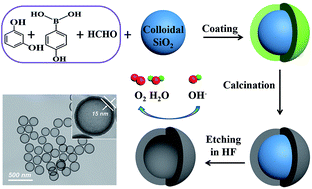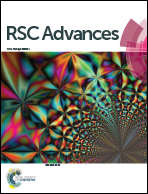Synthesis of B-doped hollow carbon spheres as efficient non-metal catalyst for oxygen reduction reaction†
Abstract
The oxygen reduction reaction (ORR) is one of the crucial reactions in fuel cells and metal–air batteries. Heteroatom doped carbon spheres can serve as alternative low-cost non-metal electrocatalysts for ORR. Herein, we developed an effective route to the synthesis of uniform and electrochemically active B-doped hollow carbon nanospheres (BHCSs). BHCSs were synthesized via the carbonization of a boric phenolic resin supported by SiO2, followed by etching the SiO2 template. The content of B, B dopant species and specific surface area were adjusted by changing the content of the B precursor and the calcination temperature. Moreover, their influence on the performance of electrocatalytic activity was explored. It was found that, among these B-doping type materials (BC2O, BCO2, B4C and BC3), B–C bonds (B4C and BC3) played a crucial role on improving the electrocatalytic activity. Compared with the hollow carbon nanospheres (HCSs), a 70 mV positive shift of the onset potential and 1.7 times kinetic current density could be clearly observed with BHCSs. In addition, the BHCSs revealed better stability and methanol tolerance than commercial Pt/C (HiSPEC™ 3000, 20%). Thus, the as-prepared BHCSs, as inexpensive and efficient non-metal ORR catalysts, may have a promising application in direct methanol fuel cells.


 Please wait while we load your content...
Please wait while we load your content...